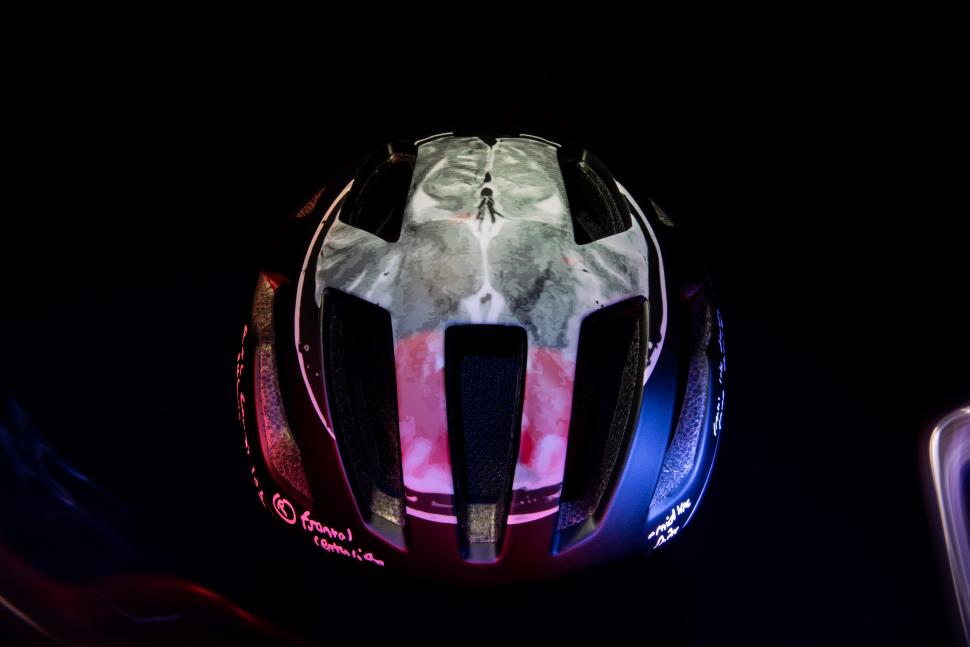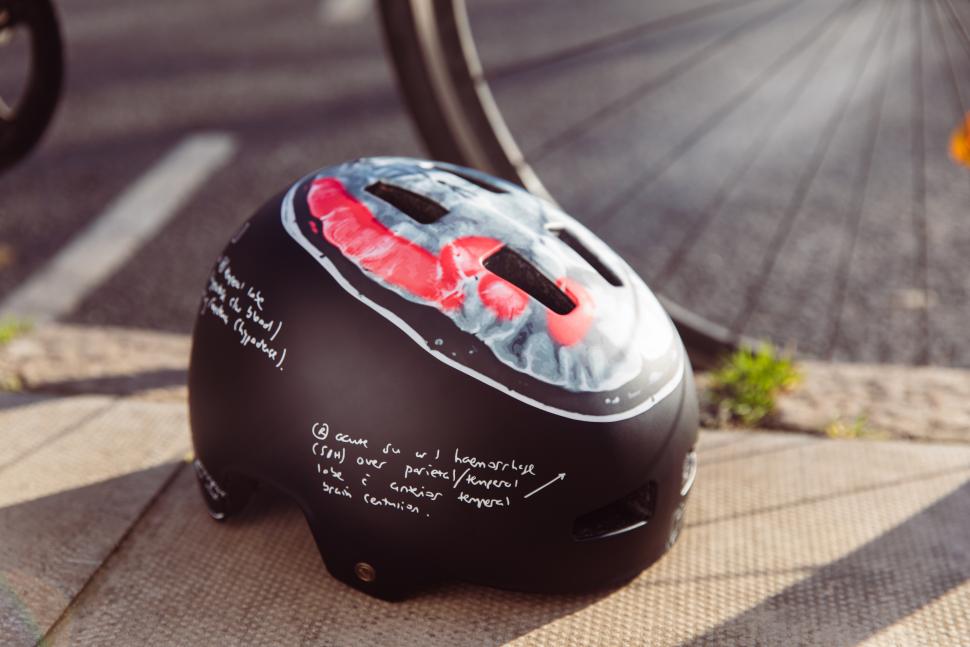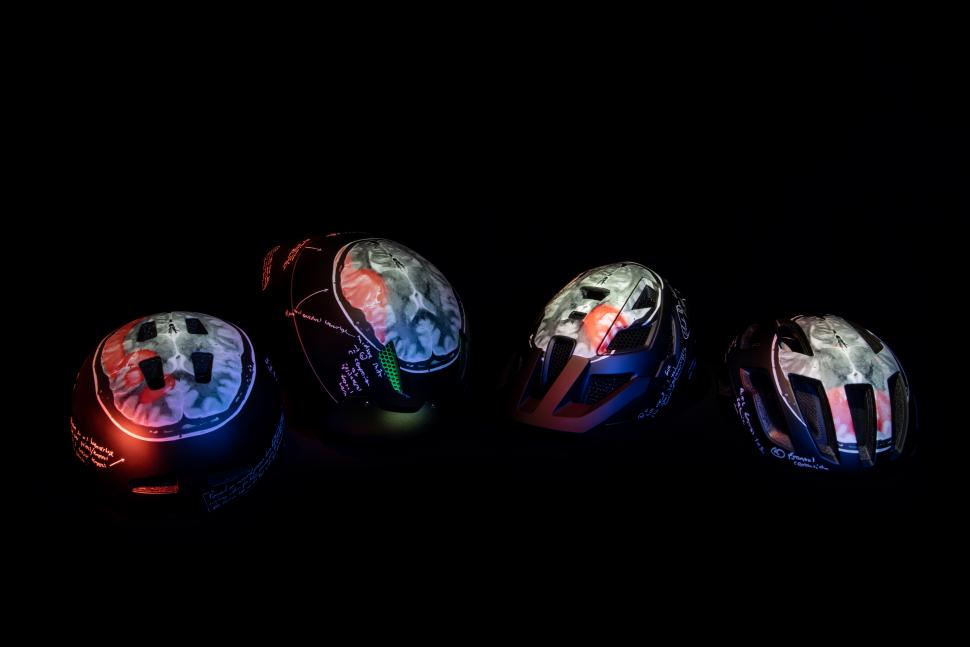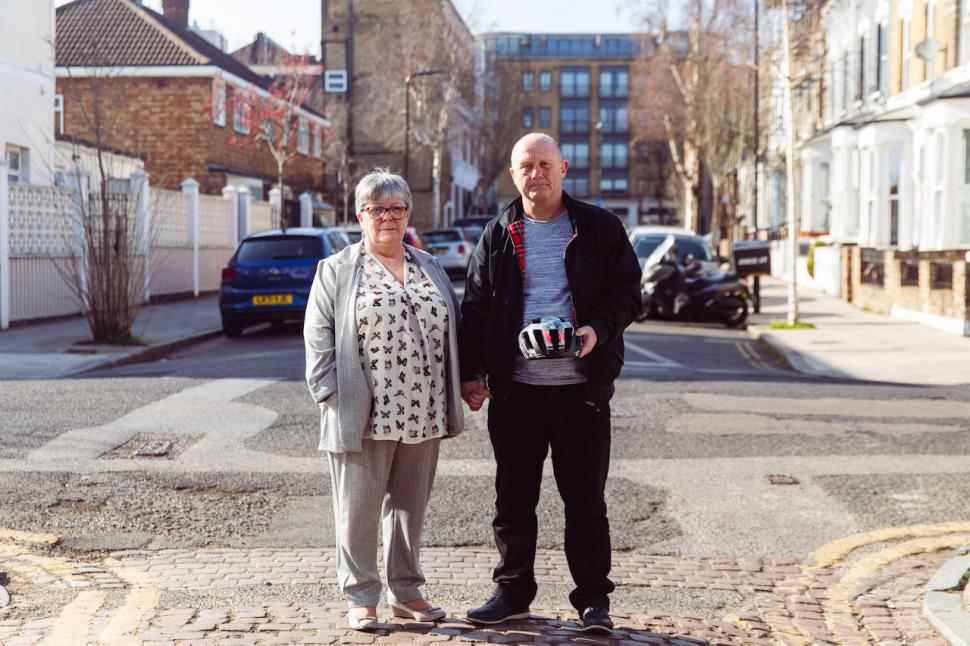- News
- Reviews
- Bikes
- Accessories
- Accessories - misc
- Computer mounts
- Bags
- Bar ends
- Bike bags & cases
- Bottle cages
- Bottles
- Cameras
- Car racks
- Child seats
- Computers
- Glasses
- GPS units
- Helmets
- Lights - front
- Lights - rear
- Lights - sets
- Locks
- Mirrors
- Mudguards
- Racks
- Pumps & CO2 inflators
- Puncture kits
- Reflectives
- Smart watches
- Stands and racks
- Trailers
- Clothing
- Components
- Bar tape & grips
- Bottom brackets
- Brake & gear cables
- Brake & STI levers
- Brake pads & spares
- Brakes
- Cassettes & freewheels
- Chains
- Chainsets & chainrings
- Derailleurs - front
- Derailleurs - rear
- Forks
- Gear levers & shifters
- Groupsets
- Handlebars & extensions
- Headsets
- Hubs
- Inner tubes
- Pedals
- Quick releases & skewers
- Saddles
- Seatposts
- Stems
- Wheels
- Tyres
- Health, fitness and nutrition
- Tools and workshop
- Miscellaneous
- Tubeless valves
- Buyers Guides
- Features
- Forum
- Recommends
- Podcast
 Endura Project Heid
Endura Project HeidEndura designs "world's most graphic cycle helmets" featuring CAT scans of cyclists' brain injuries to encourage helmet wearing
Scottish-based cyclewear manufacturer Endura has designed a "one-of-a-kind" product, dubbed "the world's most graphic cycle helmet" using the CAT scans of cyclists who suffered brain injuries in life-threatening crashes, and cited "the risks too many cyclists continue to take" by not wearing one as the motivation for the project.
The brand said its research suggests almost half (45 per cent) of cyclists in the UK do not wear a helmet, something director Noah Bernard says it hopes to "encourage the cycling community to do" and not ignore "the risks too many cyclists continue to take" by not wearing one.
Named Project Heid, the four helmets will be auctioned on behalf of The Brain Charity and were created with input from Liverpool-based neurologists. They feature four CAT scans of real-life brain injuries suffered by cyclists in life-threatening crashes.
One features the scan of Ian Charlesworth, 62, who was struck by the driver of an HGV in 2019, while another features John Moroney's, a cyclist injured in a collision with the driver of a 4x4 in Bristol.
Both men were cycling without head protection, Endura is quick to point out, and suffered skull fractures, brain injuries and neurological abnormalities such as haemorrhage and contusion, leading to cognitive impairment struggles including memory loss, fatigue and vertigo.
"The one-of-a-kind helmets are intentionally provocative, quite literally showing the potential consequences if you choose to ride unprotected," Endura suggests.
Pushing the helmets alongside research to mark Brain Awareness Week, Endura says its study showed two-thirds of Brits are concerned about sustaining a brain injury whilst cycling.
"We understand the importance of ensuring that more people on Britain's roads and trails are wearing helmets," brand director Bernard said. "We want to encourage the entire cycling community to do so. Ian and John's accounts are eye-opening reminders of the risks too many cyclists continue to take, and we thank them for bravely helping us to raise awareness with their incredible stories."
Adding to the comments, Nanette Mellor, the CEO of The Brain Charity said: "We call our head our nut and think of it as a hard object, but our brain is extremely vulnerable.
"Our skull has been likened to a tough ceramic, which can shatter upon impact, while the brain inside is like a firm blancmange. Just how fragile our brain is shows how important the need for protection is. Our brain is the most complex structure in the universe, and the most important part of who we are.
"It runs our whole world, moves our body, makes our decisions, and tells us when to smile and what we can smell. It houses our most precious memories, hidden dreams and the thousands of subtle differences that make us who we are.
"The impact of damage to the brain can be catastrophic, and that's why we are proud to partner with Endura to draw awareness to the importance of wearing a helmet when cycling to protect your brain."
Last month, Channel 5 presenter Dan Walker said he was "glad to be alive" after being hit by a driver while cycling at a roundabout in Sheffield. Walker said his helmet "saved my life" and told his social media followers "if you're on a bike — get one on your head".
The 45-year-old claimed that a police officer and paramedics who attended the scene told him that he would not be here now if he was not wearing one, but in the inevitable debate that ensued others suggested prioritising helmets is an example of 'car-brained' victim-blaming culture, with safe infrastructure and action on dangerous and careless driving more important.
Chris Boardman, the former Olympic champion-turned-active travel champion, in 2014 described the "helmet issue" as a "massive red herring" which is "not even in the top ten of things you need to do to keep cycling safe or more widely, save the most lives".
Endura's announcement comes after the recent launch of its latest helmet technology, combining Koroyd technology, which the brand says absorbs energy on impact, with Mips, a brain protection system which helps reduce force transition. The importance of latest protective technologies is supported by research, Endura says, with the risk of traumatic brain injury upon peak accident impact reduced by up to 60 per cent when wearing a helmet that includes energy-absorbing technologies (such as Mips).
> Why is Dan Walker's claim that a bike helmet saved his life so controversial?
Helmet safety is of course a hotly debated topic, psychologist Dr Ian Walker of the University of Bath, concluding that motorists tend to give more space to cyclists not wearing helmets, therefore lowering the possibility of a collision.
A 2017 review by statisticians at the University of New South Wales found that, based on 40 separate studies, helmet use significantly reduced the odds of head injury, and that the probability of suffering a fatal head injury was lower when cyclists wore a helmet (though, the authors noted, helmets cannot eliminate the risk of injury entirely).
Another study from the same year, this time from Norway's Institute of Transport Economics, concluded – based on an overview of almost 30 years' worth of analysis – that bike helmets reduced head injury by 48 per cent, serious head injury by 60 per cent, traumatic brain injury by 53 per cent, facial injury by 23 per cent, and the total number of killed or seriously injured cyclists by 34 per cent.
However, while helmets have proved useful when it comes to lessening the potential severity of a serious head injury, other research points to less effectiveness when it comes to preventing concussion, a reality of their protective limitations recognised by only one in five competitive cyclists, according to a recent study.
Dan is the road.cc news editor and joined in 2020 having previously written about nearly every other sport under the sun for the Express, and the weird and wonderful world of non-league football for The Non-League Paper. Dan has been at road.cc for four years and mainly writes news and tech articles as well as the occasional feature. He has hopefully kept you entertained on the live blog too.
Never fast enough to take things on the bike too seriously, when he's not working you'll find him exploring the south of England by two wheels at a leisurely weekend pace, or enjoying his favourite Scottish roads when visiting family. Sometimes he'll even load up the bags and ride up the whole way, he's a bit strange like that.
Latest Comments
- GMBasix 14 min 54 sec ago
There are several cycle awareness courses around the country. They may not address psychology in detail, but they take drivers out on bikes. They...
- chrisonabike 31 min 30 sec ago
Why leave yourself open to the problem in the first place? No windows, no draughty windows.
- chrisonabike 33 min 19 sec ago
Yup - although as a more "distributed" / low cost kind of "good" (which the public purse pays towards) cycling will likely always be susceptible to...
- quiff 1 hour 40 min ago
I'm sure they'd ask Lime to do that too. Come and collect your bikes and my neighbour - they're in pieces.
- brooksby 1 hour 45 min ago
Ireland seems to have a lot of problems with their cycle lanes… Almost as many as England
- quiff 2 hours 5 min ago
Fair point - I was restricting myself to pedal bikes. As I've never spent that kind of money on anything though (mortgage doesn't count), it's kind...
- brooksby 3 hours 8 min ago
And finally: I wonder how many of the "more than 3,000" signatures on that petition are actually locals, who live or work there (and are not just...
- Doug_D 4 hours 43 min ago
Another book suggestion - I can highly recommend "Lost Summers and Half-Forgotten Afternoons: A Mint Sauce collection" - a beautifully presented...
- mdavidford 6 hours 34 min ago
I think you're missing an opportunity to pack even more tech into it - add accelerometers that can detect whether they're pedalling or stepping....



Add new comment
37 comments
The internet will find on reader to comment here in the next 2 hours to say"nonegonnamakemewearahelmet" then someone else will present some data proving their functional protection .., then dude A will come back with the mention of Brexit, then a random comparasion to something the Germans did mid 20th century and then it all goes to pot.
Well done Endura.
We should be blessed having the time and energy to discuss such an issue that it has been discussed for so long.
Helmets have been discussed for many years, but this is a company exploiting the gullibility of its customers; not quite the same thing.
If helmets are not a fashion accessory destined for then next Royal Ascot races, then aren't all helmet companies exploiting the gullibility of its customers?
Well, in the sense that they are selling something that they know isn't effective, yes, I suppose they are. But most of them don't adopt such blatant scare tactics.
If you look at most helmet advertising, it mentions comfort, weight, aero improvements, but they never ever say that they will make you safer or save your life, because they would immediately be sanctioned for misleading advertising. They don't have to as the helmet zealots and the lazy, biased media do it for them.
I'm wondering with all this new-found enthusiasm for being completely balanced and unbiased, the BBC might like to reverse their policy of forty years of blatantly promoting helmets, and publishing a few facts.
They don't make safety comparisons because they have certifications (here is a video that has video parts of the test they have to pass https://www.youtube.com/watch?v=S_CYpjKVx-w) so the safety these expensive fancy helmets provide is equal if not less to safety of the heavy bulky 20£ helmets and therefore design, weight and ventilation are the key selling points. I see 100£+ helmets and I find this price ridiculous as I have bought or sold double digit number of bicycles (ok most were kids) at a smaller price.
Ok, this is just wrong. You are misrepresenting your opinion as fact, which is pretty insulting to the good people who invest in, design and test these things and the scientists and neurologists who advise them.
If you bothered to understand the other half of the science (other than your arguable statistics), you'd understand that not all helmets are equal (Virginia Tech do a lot of compariative testing, which shows which ones are performing better). And if you bothered to speak to the helmet industry, you'd also know that their real challenge is the helmet standards, which have remained static since the 1990's, creating an artificial low common denominator, that makes it hard to compete with better, but more expensive helmets; mainly as the public don't understand the difference.
MIPS is the only real development since then that's worked, as they managed to create a business model around a separate technology, that made it worth investing vast sums into creating a brand that the public could recognise, and the other manufacturers could then buy into.
The good thing about this is it forced the standards agencies to recognise that the thinking and technology has moved on and they need to change.
This is why there are various expert groups currently working to change the standard, which ideally will include:
1. More concussion (lower impact) protection.
2. Rotational impact protection
3. A simple star system, to help the public easily choose the best helmets.
4. Crucially - a mechanism to enable continuous improvement based on developing brain science.
The old Snell standard used to be improved and updated regularly, but this stopped once EN1078, CPSC etc came along, as complying with Snell made it too expensive to compete with manufacturers only compying with the lesser standards. The unintended consquence being it's frozen the technology at the level that you so rail against.
Whether you like it or not (and no one in the helmet industry does now), it's just the way the manufacturing world works and it can sometimes take way longer than anyone wants to overcome the inertia of the standards system. We've seen the same thing in countless other industries we've worked in.
Pages